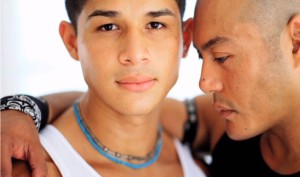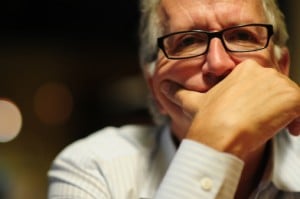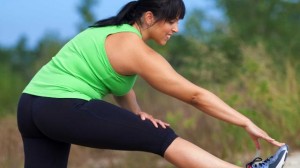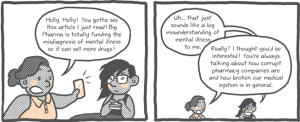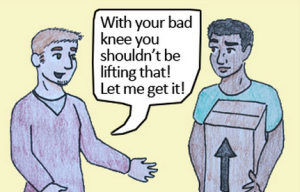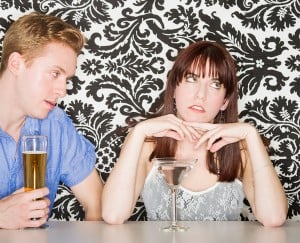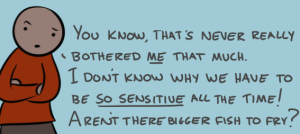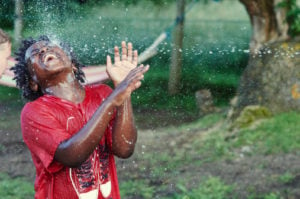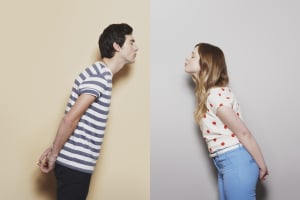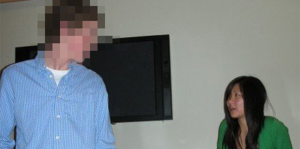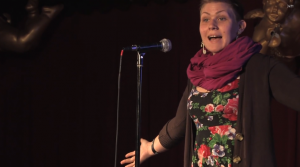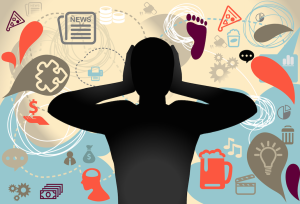Author’s Note: I want to let you know that the person writing this article is not a gay man. I am a cisgender gay woman and therefore an outsider to gay male culture, specifically in US metropolitan areas. I have chosen to write this piece because I have known and loved many queer men throughout my life. Researching and writing this piece led to some candid, revealing conversations with my queer male friends; I also realized that this topic affects many queer men and needs to be addressed. I’m not claiming to know everything, but this is a conversation that needs to start through both a queer lens and a feminist perspective. Read on.
Sure, marriage equality is now becoming a reality in a majority of the United States; however, same-sex marriage legislation is not the only issue queer people face.
In fact, I’d venture to say that same-sex marriage isn’t even the most important so-called “Gay Issue.” It’s just the most publicized one.
Queer male body image, however, is one of many “Gay Issues” that all too often gets swept under the rug, partially because of its social nature. Fat-shaming in any community cannot be fixed with an online video campaign or by taking things to the Supreme Court.
Not to mention, straight people who don’t have close relationships with openly gay men most likely have no idea which issues gay men face within their communities. Unless you know queer men or you are one yourself, you probably have no idea just how many queer men struggle with eating disorders, exercise disorders, and/or incredibly negative body image.
My first time hearing of any queer-related body image issue was about ten years ago in a punch line of Will & Grace involving the idea of “Gay Skinny” versus “Straight Skinny.” Apparently, those two things are not the same (and there’s also another awful distinction: “Skinny-Fat”).
No matter how funny Sean Hayes’ joke delivery was, the issue is no laughing matter.
Fatphobia in gay male spaces is a social phenomenon that has multiple roots: toxic masculinity, misogyny, internalized homophobia, fatphobia, media stereotypes, and – ultimately – the human needs for belonging and love.
As I stated before, this is a conversation we need to have both as queer activists and as feminists. Here’s why.
The ‘Real Men’ Narrative
Masculinity isn’t a bad thing.
But when a society’s vision of masculinity sets unhealthy standards and promotes harmful behaviors, that’s when it becomes toxic.
A byproduct of toxic masculinity is the idea that there is only one valid way to be a man.
The social construct of a “Real Man” is just one way patriarchy negatively impacts men of all sexual orientations.
The “Real Man” narrative – even when used with somewhat positive intentions – needs to be put to bed. There is more than one type of legitimate manhood, and any attempts to regulate masculinity will inevitably exclude people.
Especially queer people.
Close your eyes and try to envision society’s picture of a “Real Man.” He’s tall, strong, rich, powerful, and – let’s be real here – heterosexual.
The “Real Man” narrative treats queer men as less than 100% male – and can even lead to misgendering queer men by implying that they are “like women.”
In a patriarchal society, manhood is held to such a premium that many men will feel driven to overcompensate if their masculinity is questioned or threatened. This can sometimes, for example, look like an intense weight-lifting habit.
And do you know which group of men spends the most money on fitness?
You guessed it: Gay men.
Where Misogyny Comes In
The flipside of toxic masculinity is misogyny.
Generally speaking, the intense desire to assert one’s masculinity comes from the desire to avoid any association with supposedly woman-like traits.
Is there anything inherently wrong with being woman-like? Not at all! That attitude comes from a culture steeped in misogyny.
Gay men are real men, but society sometimes regards them in a similar way to women – which, unfortunately, amounts to lesser treatment.
Not only is this phenomenon sexist, but it’s homophobic, too.
This societal mistreatment can really get into someone’s head. No wonder others’ homophobia can transfer itself to queer people as internalized homophobia.
What do some gay men do in response to this misgendering, homophobia, and misogyny? Prove their manhood by getting ripped at the gym.
The Pervasiveness of Fatphobia
It’s no secret that our media and cultural narratives have issues with fatness in general. Fatphobic sentiment creeps into healthcare, fashion, entertainment, human resources, education, and beyond.
Usually, feminist blogs tend to frame fatphobia and its manifestation in body image as a problem that mostly affects women.
But men face similar pressure to be thin that women do, though the reasoning is different.
Women are taught that being thin will make them attractive to men.
Men are taught that staying in shape makes them strong and capable.
Gay men are taught to want to be attractive to other men and to appear strong and capable.
Even though many feminist outlets discuss fatphobia and body image as primarily female issues, we must remember that men are affected, too.
Men experience societal pressure, and men live with eating and exercise disorders.
It is believed that gay men are more likely to develop eating disorders than their straight counterparts, and the social climate of the gay male community undoubtedly triggers those living with eating disorders.
Big Fat Gay Dating
Media representation and society’s stereotypes of gay people absolutely take a toll on self-image in gay men. You can bet your bottom dollar that this factors into the gay male dating world.
Queer male dating sites like Grindr, Adam4Adam, and Manhunt – as well as services that cater to a wider range of genders and orientations – are fantastic resources for queer men to find a date.
But let’s be honest here: What is the first thing you notice about someone’s dating profile?
Say it with me: The profile picture.
Because so many gay men face scrutiny regarding their own bodies, it isn’t a huge leap to imagine that a few of them will project that behavior onto others, using that same harsh judgment when looking for a potential boyfriend. That’s Insecurity 101.
This cycle of insecurity sets a nearly impossible beauty standard and sends a toxic message to queer men: If you don’t look a certain way, you don’t deserve to be loved.
The jolly-sexless-gay-guy stereotype (like the plus-size husband in Modern Family) feeds into this idea, because it implies that fat queer men know that they don’t deserve love and have resigned themselves to a celibate, one-liner laden life.
But no.
Being fat doesn’t automatically make someone unattractive.
Fat people are worthy of sympathy, connection, sexual satisfaction, and love.
You are worthy, no matter what you look like.
Twinks and Otters and Bears, Oh My!
I know I can’t get away with discussing gay male dating and body image without at least addressing gay niche labels and communities.
For those of you who don’t know, there are sub-communities and categories in gay male spaces that correlate with appearance, age, activities, and sometimes sexual preferences. Here’s a quick (and by no means comprehensive) vocabulary lesson:
- Twink: Thin, usually clean-shaven young gay men who most closely fit the societal stereotype of gay men. Twinks who get a little older and/or more muscular are sometimes referred to as twunks.
- Bear: The opposite of twinks. Bears are generally heavier, somewhat older gay men who can rock lots of facial and body hair. Sometimes they appear more outwardly stereotypically masculine than other subcultures in the gay male community.
- Cub: A bear in training. Pretty self-explanatory. See above, except cubs are younger.
- Otter: Thin gay men who usually have more body and facial hair than twinks. Some consider this group a subset of bears. They may also be older than twinks and/or have a less muscular (but still lean) build.
The list of gay labels (Gaybels?) goes on and on. There are so many categories, and many of them focus on appearance (Chubs, Chasers, Gym Bunnies, and so on).
Now, this is a feminist website, so I have to take a second and give everyone a seemingly obvious heads-up: Physical appearance does not and should not define who you are.
Furthermore, gay labels can affect gay men’s social lives and dating prospects, because many gay spaces only cater to certain gay subcultures (honesty time: twinks). These body-centric divisions can sometimes allow fatphobia to thrive, even in supposedly inclusive environments.
Bottom line: Just because a club calls itself a gay club doesn’t mean all gay men feel welcome there. This absolutely affects fat gay men.
While labels can help some gay men find a sense of community, they aren’t for everyone. Just like with any other labels, what helps one person belong may alienate someone else.
If you feel like you fit in a certain gay subculture, rock on!
If you don’t, there is nothing wrong with you, and you are not alone.
What Now?
Whether you are a gay man or an ally, here are a few ways that you can push back on fatphobia in queer spaces:
1. Fat Is Fat — That’s That
Try your hardest to fight against the cultural attitudes that fatness is somehow scary, unhealthy, unlovable, or wrong in any other way.
If we perpetuate fatphobia, we continue to pressure people to change their bodies or hate others’ bodies.
Whether you’re talking about your own body, someone’s outfit choice, or what you’re having for lunch, be mindful of your words and what they may imply about body types.
2. Remember: Men Have Eating Disorders, Too
Especially gay men.
As I mentioned before, gay-identified men are disproportionately found to have body image disturbances and eating disorder behavior in comparison to straight-identified men.
Remember this in your body-positive activism as well as your interactions with friends.
Your adorable “Gay Best Friend” (I hate that phrase) could have some demons that are hidden in plain sight, all because his life doesn’t fit a stereotypical eating disorder narrative.
3. You Might Have to Call Out Your Friends
If you hear fat-shaming in a queer space, you don’t have to sit back and accept it.
If you feel safe and empowered to do so, you can absolutely stand up and let your voice be heard.
It can be as simple as saying “That’s not very nice” or redirecting the conversation to something more interesting than appearances.
***
Fatphobia in gay male spaces is an issue that encompasses so much more than a single article can contain.
Ultimately, we all need to remember that there is not one prescribed way to live life.
Judgments based on gender presentation, body type, stereotypes, and sexual orientation have toxic byproducts that further divide us instead of bringing us together. Especially in queer spaces, we should be raising each other up with love and sensitivity rather than tearing each other down out of insecurity.
Queer people don’t want to be judged by sexual orientation, so we shouldn’t be judging others in the community by body type.
As I have mentioned before, my words are by no means the end-all, be-all when it comes to gay male fat-shaming. We need to start this discussion and continue it, even when it feels uncomfortable.
I’m up for the task. Are you?
[do_widget id=”text-101″]
Maddie McClouskey is a Contributing Writer for Everyday Feminism. She’s a twenty-something lesbian in New York City and currently writes weekly dating advice pieces for the LGBTQ event app and website SheSeekOnline and was a regular contributor to the sexuality and feminism site ToughxCookies. When she’s not writing articles about gayness, she’s performing stand-up comedy, singing show tunes to her girlfriend and dog against their will, or making up jokes for Twitter @SoundofMaddie. Read her articles here.
Search our 3000+ articles!
Read our articles about:
Our online racial justice training
Used by hundreds of universities, non-profits, and businesses.
Click to learn more


